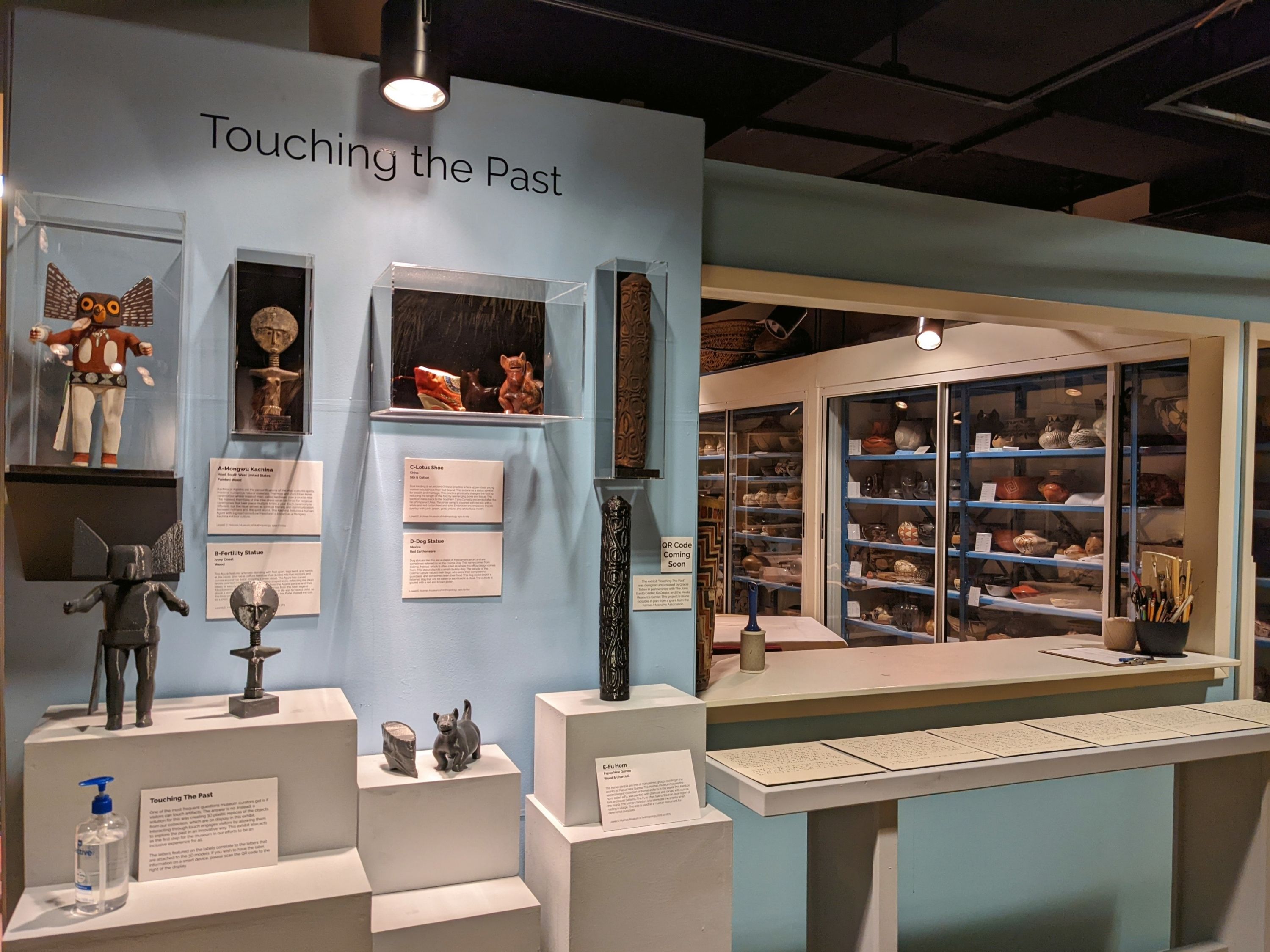Touching the Past
One of the most frequent questions museum curators get is if visitors can touch artifacts. The answer is no. Instead, a solution for this was creating 3D plastic replicas of the objects from our collection, which are on display in this exhibit. Interacting through touch engages visitors by allowing them to explore the past in an innovative way. This exhibit also acts as the first step for the museum in our efforts to be an inclusive experience for all.
The letters featured on the labels correlate to the letters that are attached to the 3D models.
The exhibit "Touching The Past" was designed and created by Gracie Tolley in partnership with The John Bardo Center, GoCreate, and the Media Resource Center. This project is made possible in part from a grant from the Kansas Museums Association.
Mongwu Kachina
Hopi, South West United States
Painted Wood
Kachina or Katsina are the personifications of the Hopi culture's spirits, made of numerous natural materials. The Hopi and Zuni tribes have ceremonies where masked men, called kachinas, play a crucial role. The masked members of the tribe dress up as kachinas for religious ceremonies that take place multiple times a year. Each ceremony is different, but the ritual serves as spiritual training and communication between humans and the spirit world. This Kachina features a human figure with a great horned owl head and is known as a Mongwu Kachina in Hopi culture.
1994.07.059 Lowell D. Holmes Museum of Anthropology
Fertility Statue
Ivory Coast
Wood
This figure features a female standing with feet apart, legs bent, and hands at the navel. She has a coiffure hairstyle that divides into five sections and curves around her back, creating a linear detail. The figure has curved brows, pointed breasts, and large almond-shaped eyes, reflecting the Akan ideals of beauty. This style of doll comes from the Asante people and their Akua'ba dolls. The tradition of these dolls comes from the Akan legend about a woman named Akua. Her biggest wish in life was to have a child, so the local priest commissioned a wooden doll for her. If she treated the doll as a child, she would conceive a baby of her own.
2008.02.006 Lowell D. Holmes Museum of Anthropology
Lotus Shoe
China
Silk & Cotton
Foot binding is an ancient Chinese practice where upper-class young women would have their feet bound. This is done as a status symbol for wealth and marriage. This practice physically changes the foot by reducing the length of the foot by rearranging bone and tissue. This tradition dates back to the Southern T'ang Dynasty and ended after the fall of Imperial China. This shoe vamp is covered with red silk with a white and red cotton heel and sole. Embroider encompasses the silk overlay with pink, green, gold, yellow, and white floral motifs.
1971.01.029 Lowell D. Holmes Museum of Anthropology
Dog Statue
Mexico
Red Earthenware
Dog statues like this are a staple of Mesoamerican art and are sometimes referred to as the Colima Dog. This name comes from Colima, Mexico, which is often cited as where this effigy design comes from. This statue depicts a small chubby dog. The people of the Colima Culture valued their dogs, who were their companions. guardians, and sometimes even their food. This dog could depict a fattened dog that will be eaten or sacrificed in a ritual. The outside is glazed with a red and brown polish.
1991.03.054 Lowell D. Holmes Museum of Anthropology
Fu Horn
Papua New Guinea
Wood & Charcoal
The Asmat people are one of many ethnic groups residing in the country of Papua New Guinea. The Holmes museum houses the second largest collection of Asmat artifacts in the world. This bamboo horn, called a Fu, was painted with charcoal and carved with cuscus tails and navel patterns. The Fu is often tied to the Irian Jaya region of the island. The primary function is to intimidate the enemy when raiding a village. This also is used as a musical instrument for ceremonial purposes.
2001.10.0675 Lowell D. Holmes Museum of Anthropology


